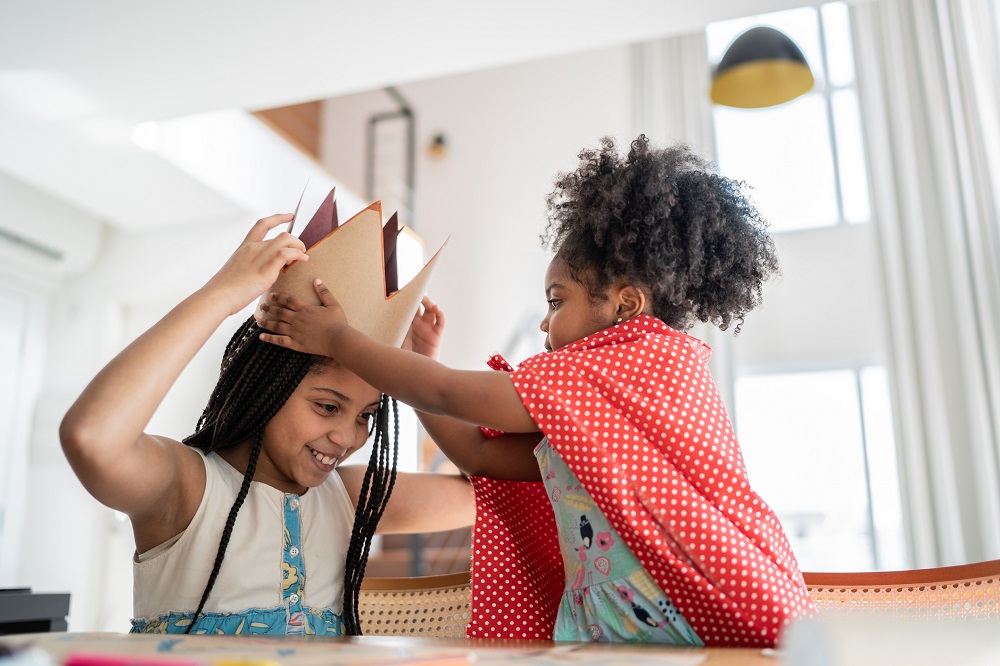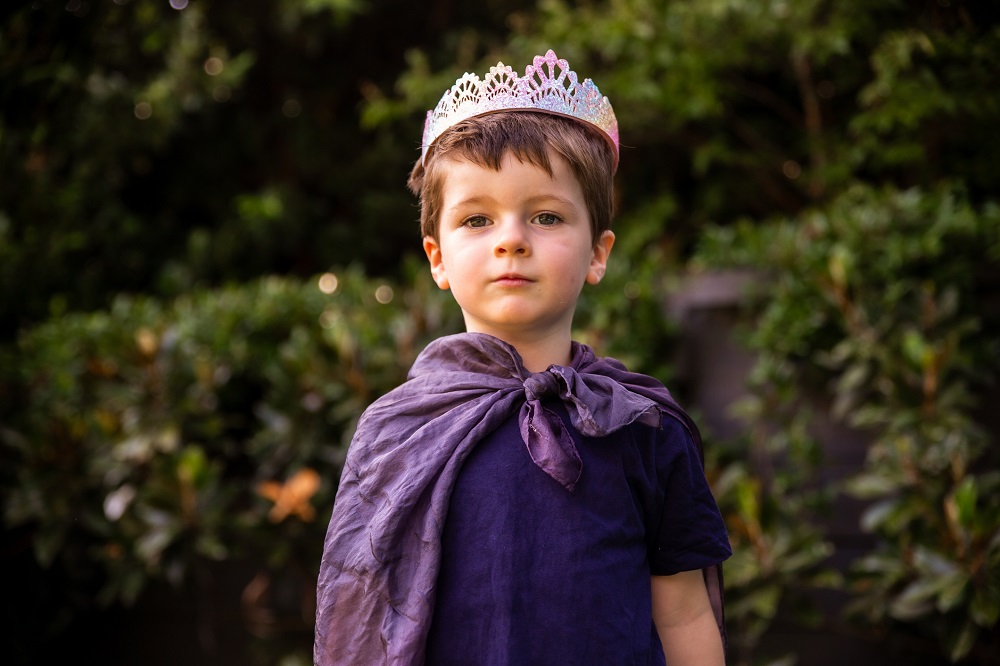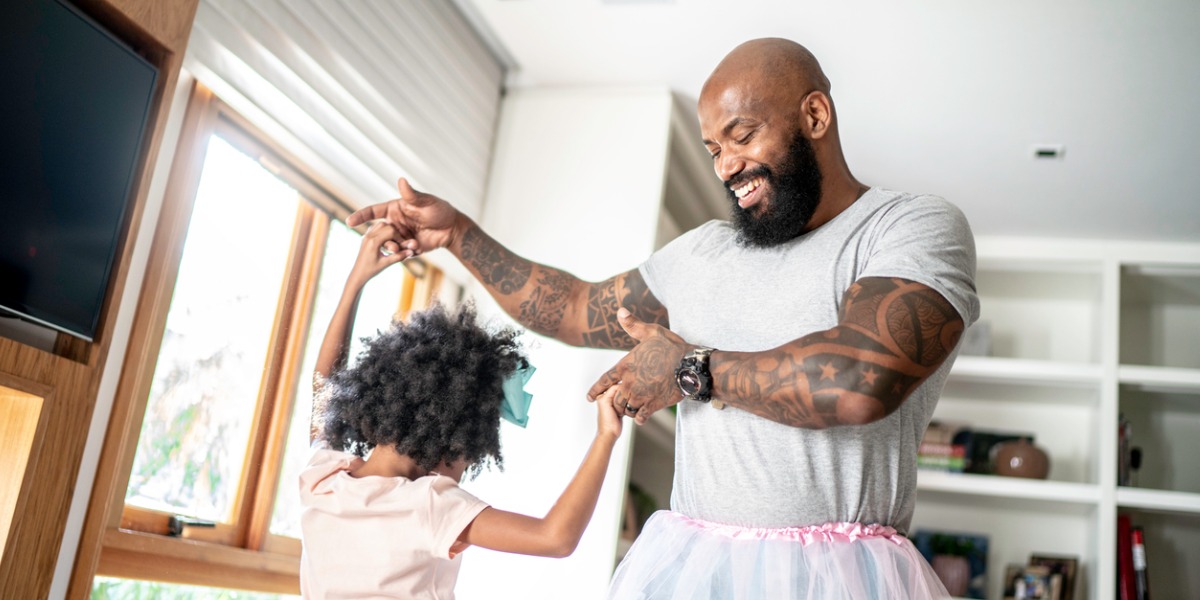According to the old nursery rhyme, little girls are made of ‘sugar and spice and all things nice’ while little boys are made of ‘frogs and snails and puppy dog tails’. But if children grow up with fixed ideas about what girls and boys can be or should do, this can limit their options and ambitions. It may prevent them from being the person they want to be, or doing something they want to do or could be good at.
In addition, if children don’t feel they fit into the stereotypes they see, this can make them feel anxious, confused and unsure of themselves. It can also lead to bullying. Sadly it can result in girls being more likely to become victims of violence and abuse.
Here are some things you can do to help prevent that happening.
What are gender stereotypes?
A gender stereotype is a simplified view of what it means to be male or female. Stereotypes assume that most boys or men feel and behave in a similar way, and that this is different from the way most girls and women feel and behave.
Here are some examples of gender stereotypes, and why they can cause problems.
- ‘Boys don’t cry’ – The idea that boys should hide their feelings (or not feel deeply in the first place) can make it hard for boys to talk about how they feel. Repressing their emotions when they’re going through difficult experiences can have a bad impact on their mental health, leading to depression and even suicide.
- ‘Boys will be boys’ – Believing that it’s okay for boys to be rough and boisterous while girls should be quiet, gentle, co-operative and polite means that boys can be excused for behaving badly, while girls can be criticised for the same behaviour. Also, growing up believing they must always be polite can make it hard for girls to speak up when they feel uncomfortable about something, like the way a boy behaves towards them. This can lead to an imbalance of power in relationships, and can result in abuse.
- ‘He fancies you’ – This is often said when a young boy is found hitting, following or annoying a young girl. But dismissing this behaviour makes girls feel that their discomfort doesn’t matter, and teaches them that this kind of harassment is a sign of affection or romance. It’s also teaching boys that it’s okay to treat girls badly.
Why is it important to challenge gender stereotypes?
Gender stereotypes are all around us – on TV, online, in shops (look at the difference between girls’ and boys’ clothes and toys) and in our homes.
Children pick up on these messages about what’s ‘normal’ for boys and girls really quickly. This shapes how they see themselves and others as they grow up. For example, a girl may decide not to play with a toy car because it’s a ‘boy’s toy’, or a boy might refuse to wear anything pink because it’s ‘girly’. They may decide that other children who don’t conform to these stereotypes are ‘weird’, and treat them badly or pick on them as a result.
As children grow up, these beliefs can limit their choices. For example, a girl may decide not to study maths or science to become an engineer because that’s a ‘boy’s job’ and a boy may not go to dance classes, even if he really enjoys dancing.
In some cases it can be more acceptable for girls to do ‘boy things’ than it is for boys to do ‘girl things’.
These attitudes can also lead to unhealthy relationships, where girls and women feel pressured into situations that make them feel uncomfortable because they feel it’s rude to say ‘no’, and where boys are used to getting their own way and don’t listen when girls do say ‘no’. It can also lead to boys feeling that they can't speak up when they experience unwanted touch in a relationship because they are expected to want it. This can lead to abuse and violence.
So the more you can do to challenge gender stereotypes, and the younger your child is when you start to do this, the better. It’ll help them realise that the things they want to be and do don’t have to be limited by their gender. It will also make them more accepting of other people’s choices, which helps reduce prejudice, bullying, violence and abuse.
Tips for challenging gender stereotypes
Often as parents or carers, we don’t even realise we’re stereotyping girls and boys, because we grew up with these stereotypes too, and it’s so ingrained in our culture. Have a look at this video from the BBC about girls’ and boy’s toys for an example of this.
Here are some tips you can try to challenge these stereotypes.
Tip #1: Ask them how they're feeling every day
Gender stereotypes can limit the feelings that boys and girls or men and women are expected to show. For example, it can be seen as ‘unmanly’ to talk about your feelings or to cry, but being angry and even aggressive is okay. Whereas girls are expected to be more in touch with their emotions, and to be more understanding of other people’s feelings, but aren’t meant to get angry.
Repressing our feelings is bad for our mental health. It’s much better to be able to express how we feel in a way that doesn’t hurt ourselves or anyone else. This way we can deal with the feelings and move on, instead of letting them fester under the surface.
So it’s important to talk to your children about their feelings and help them process them. Just getting into the habit of asking how they’re feeling every day can help open up the conversation. If you have a girl and a boy, make sure both are given an opportunity to open up.
Tip #2: Help them understand their feelings
Sometimes it can be hard to understand why we’re feeling the way we feel. Feelings often have physical ‘side effects’ – like feeling sick if we’re nervous or fizzing inside if we’re excited. So it might help to talk to your child about their physical feelings and then see if they can work out why they may feel like that.
Here are some resources that can help:
- For little ones, these videos from CBeebies are really helpful.
- This animation from the Anna Freud Centre helps children understand what mental health is and the difference between every day small feelings and a big feeling. You could try watching it together and having a chat about it. You can also download a booklet from the Anna Freud Centre with more advice.
You can also download parents’ resources from the RSHP (Relationships, Sexual Health and Parenthood) website. These explain what your child is learning in school about their body, relationships and their emotions and how you can support this at home. They also include suggestions of books you can read together.
- Early Years – nursery and P1
- P2 – P4
- P5 – P7
Tip #3: Let them know all feelings are valid
It’s important for children to understand that, everyone feels uncomfortable emotions like being anxious, scared, angry, jealous or sad at some point. What matters is how we deal with these emotions. Let them know that they can always talk to you about how they’re feeling, and that this is much better than showing how they feel by being aggressive or hiding their feelings.
Tip #4: Talk about good qualities
Chat to your child about the good qualities they admire in other people. Help them understand that anyone can be brave, kind, loyal, caring, strong, funny or clever – these qualities aren’t limited to one gender. Always try to praise children for the same things, rather than praising boys for doing well at sport and standing up for themselves, and girls for being pretty and clever.
Tip #5: Set a good example
Try to set a good example by not talking about things like toys, clothes, hobbies, jobs, films or behaviours as ‘for girls’ and ‘for boys’. Children pick up on casual comments like ‘that haircut makes her look like a boy’ or ‘why did he decide to take up ballet?’ and it all helps them build up a picture of what girls and boys should and shouldn’t look like or do.
Tip #6: Read books that challenge gender stereotypes
This list from the Scottish Book Trust suggests picture books you can read with your child that challenge gender stereotypes in lots of different ways. This list suggests books for older children featuring inspiring female characters. Why not have a look in your local library together to see what you can find?
Tip #7: Have a think about chores
You could also think about who does what in your home. If mum does all the cooking, cleaning and family admin (like remembering birthdays and making doctor’s appointments) while dad does the DIY, maybe you could shake things up a bit?
Likewise, do your daughter and son have different chores from each other? Does one of your children have fewer chores to do?
Tip #8: Offer them a choice
Try not to assume that boys will want to play with footballs and action toys and girls will want dolls and tea sets. It’s great for children to play with a range of different things – and they don’t need to be new and expensive either. Building a rocket ship from cardboard boxes or making a drum kit out of biscuit tins can be just as fun as playing with the latest gadget and is brilliant for firing their imaginations.
Tip #9: Let them wear what they want
Help them challenge the differences between ‘boys’ clothes’ and ‘girls’ clothes’ we see in shops. Boys’ clothes tend to feature machines, monsters and predators, while girls’ clothes feature soft, cute things like rabbits and flowers. But why shouldn’t a girl wear a blue dinosaur hoodie, or a boy wear a pink unicorn onesie?
Tip #10: Help them use their imaginations when they’re dressing up

Instead of spending a fortune on ready-made princess or superhero costumes, try creating a dressing up box full of cheap fabric and cast off adult clothes. That way, they can use their imaginations to come up with their own costumes. An old towel can be a cape, a shirt can become a dress, and some tights can be a wig!
Tip #11: Explore different sports
Some children get very set ideas about which sports it’s okay for them to play. As girls grow up, they can drop out of sports altogether because they don’t feel comfortable taking part. So try to challenge these ideas when you can.
For example, if they say things like ‘only boys can play football’, try showing them some clips of female footballers on YouTube and they might change their minds!
Tip #12: Challenge sexist language
Try to avoid using phrases that put down girls or boys, and challenge your children if you hear them using this kind of language. For example, they may say that someone ‘throws like a girl’ as an insult, or a boy might be told to ‘man up’ if he’s upset or crying.
Tip #13: Ask why
If you hear your children saying things like ‘girls can’t be astronauts’ and ‘boys can’t be nurses’, ask them why they think that, and then have a chat about it.
Tip #14: Don’t excuse or put up with aggressive behaviour
We sometimes let boys get away with behaving aggressively or violently by saying things like ‘boys will be boys’. But this lets boys get away with behaviour that wouldn’t be tolerated in girls, and leads them to think that being aggressive is okay, or a means to getting their own way.
So if your boy behaves aggressively – for example, deliberately breaks things or hits you or another child – don’t let them get away with it. Talk to them calmly and firmly about how their behaviour is not okay. You could also suggest other things they could do if they’re feeling angry to get rid of the feelings, like moving their body to work out the energy, going for a run, or doing some breathing exercises.
Our page on keeping calm with your child has more tips.
What’s the difference between not conforming to gender stereotypes and being transgender?
It’s perfectly normal for children to want to try out all kinds of different things that don’t fit the stereotype for their gender. Some girls like to play football and get muddy, some boys like to knit and play dress up. This is one of the reasons it’s so important not to pigeon-hole children according to their gender.
Gender identity is about much more than liking to do things that don’t conform to gender stereotypes. It’s about the gender we feel we are inside. This may be a different gender to the sex recorded at birth, or neither gender, or both, or something else.
By challenging gender stereotypes, you’re helping to create a safe, comfortable environment for your child to be themselves – and also to experiment with who they might be.
Our page on talking to your child about LGBT+ and gender identity has advice on what to do if your child is questioning their gender or seems unhappy about it.
 Activities & Play
Activities & Play Behaviour
Behaviour Childcare
Childcare Development & Growing Up
Development & Growing Up Family, Friends & Relationships
Family, Friends & Relationships Feeding Your Baby
Feeding Your Baby Food & Eating
Food & Eating Health & Safety
Health & Safety Mental Health & Wellbeing
Mental Health & Wellbeing Money & Work
Money & Work Online Behaviour & Safety
Online Behaviour & Safety Pregnancy & First Days
Pregnancy & First Days School & Education
School & Education Sleep
Sleep











 Mental Health & Wellbeing
Mental Health & Wellbeing
 Online Behaviour & Safety
Online Behaviour & Safety